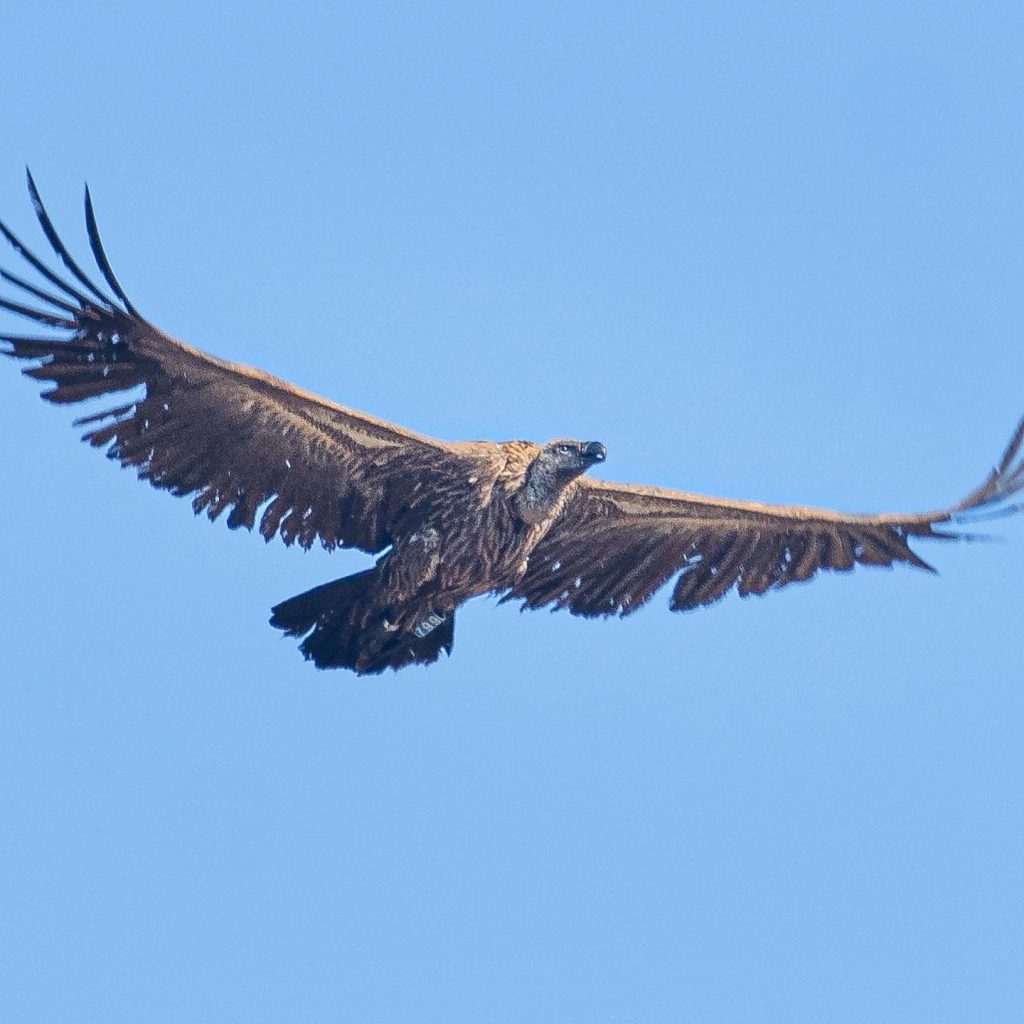
The African White-backed Vulture, tagged in Spain in December 2021, has been exploring half of the Iberian Peninsula, according to the GPS data shared by Fundación Migres. Here is the story and recent updates of the first of its kind GPS-tagged in Europe.
Following the movements of the White-backed Vulture across Spain and Portugal
On 3 December 2021, in Tarifa (Spain), a White-backed Vulture was equipped with a GPS transmitter to monitor its movements and understand vagrancy patterns, as its recurrence in Europe has been witnessed in the past 10 years. The White-backed Vulture, a Shub-Saharan species, is the most common and widespread vulture species in Africa, occurring across the East, West and South of the continent.
Despite being a rare visitor in Northern Africa, a few individuals have been seen in the Iberian Peninsula, indicating that they probably crossed Morocco following the flocks of Griffon Vultures migrating northwards. Back in 2021, at least two White-backed Vultures visited the Spanish side of the Strait of Gibraltar, and two others were marked on the Moroccan side.
Data shared by Fundación Migres shows that the White-backed Vulture equipped with a GPS transmitter spent the winter months in the province of Cádiz, with occasional visits to Málaga and Seville. As warmer days arrived with spring, it crossed the Guadalquivir valley and went back and forth along the border between Portugal and the regions of Extremadura and Castilla y León in Spain.

The African White-backed Vulture is a Critically Endangered species
According to the Vulture Multi-species Action Plan (Vulture MsAP), co-developed by the Vulture Conservation Foundation and endorsed by the Convention for Migratory Species, there are 270,000 African White-backed Vulture (Gyps africanus) individuals, and the species is facing a rapid decline. It went from Least Concern in 2005, to Critically Endangered in only ten years, as stated by the IUCN Red List of Endangered Species.
The successive and frequent poisoning incidents in Africa are the key drivers behind the rapid decline of several vulture species. In addition, illegal trapping and killing for traditional belief practices, national and international illegal trade and changes in their habitat with a possible reduction of food availability hinder the species’ survival. Other anthropic causes, such as power infrastructure and disturbance of nesting places also pose problems for African vulture species like the White-backed Vulture.
A large-scale forager with an upturn in sightings in Southern Europe
Considered a sedentary species, some African White-backed Vultures, especially juveniles, forage across vast areas. In South Africa, for instance, six immature birds left the country and crossed five other countries (Namibia, Angola, Zambia, Botswana and Zimbabwe), with a mean foraging range of 269,103 km2. Food availability and seasonal rains might be some of the reasons for their shifting ranges.

Monitoring the vagrancy patterns with the GPS data collected is important to understand the wider conservation issues for the declining populations of the species in Africa. These movements have also been seen with the Rüppell’s Vulture (Gyps rueppelli), whose increasing presence in Southern Spain seems to indicate a possible new breeding population that can lead to hybridisation and reverse gene flow back to the sub-Saharan African vulture population.
We look forward to seeing the next movements of this African White-backed Vulture and advancing with the study evaluating African vulture colonisation patterns in the Palearctic.
Source: Bird Guides and Vulture Multi-species Action Plan (Vulture MsAP)
